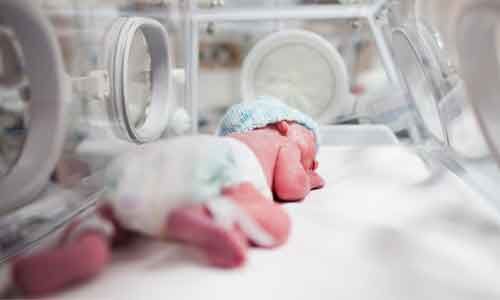- Home
- Medical news & Guidelines
- Anesthesiology
- Cardiology and CTVS
- Critical Care
- Dentistry
- Dermatology
- Diabetes and Endocrinology
- ENT
- Gastroenterology
- Medicine
- Nephrology
- Neurology
- Obstretics-Gynaecology
- Oncology
- Ophthalmology
- Orthopaedics
- Pediatrics-Neonatology
- Psychiatry
- Pulmonology
- Radiology
- Surgery
- Urology
- Laboratory Medicine
- Diet
- Nursing
- Paramedical
- Physiotherapy
- Health news
- Fact Check
- Bone Health Fact Check
- Brain Health Fact Check
- Cancer Related Fact Check
- Child Care Fact Check
- Dental and oral health fact check
- Diabetes and metabolic health fact check
- Diet and Nutrition Fact Check
- Eye and ENT Care Fact Check
- Fitness fact check
- Gut health fact check
- Heart health fact check
- Kidney health fact check
- Medical education fact check
- Men's health fact check
- Respiratory fact check
- Skin and hair care fact check
- Vaccine and Immunization fact check
- Women's health fact check
- AYUSH
- State News
- Andaman and Nicobar Islands
- Andhra Pradesh
- Arunachal Pradesh
- Assam
- Bihar
- Chandigarh
- Chattisgarh
- Dadra and Nagar Haveli
- Daman and Diu
- Delhi
- Goa
- Gujarat
- Haryana
- Himachal Pradesh
- Jammu & Kashmir
- Jharkhand
- Karnataka
- Kerala
- Ladakh
- Lakshadweep
- Madhya Pradesh
- Maharashtra
- Manipur
- Meghalaya
- Mizoram
- Nagaland
- Odisha
- Puducherry
- Punjab
- Rajasthan
- Sikkim
- Tamil Nadu
- Telangana
- Tripura
- Uttar Pradesh
- Uttrakhand
- West Bengal
- Medical Education
- Industry
Early intervention after hospital discharge develops motor function in preterm infants: Study

Recent research has noted that a home-based, post-discharge early intervention (EI) program was a practical approach to promote motor development and physical growth in early preterm infants.
The study is published in the BMC Pediatrics.
The implementation of early intervention (EI) in medical settings is time-consuming and resource-intensive, which limits its extensive use. Previously, the Chinese Eugenics Association developed a home-based, post-discharge EI program. However, its findings were inconclusive.
Therefore, Juan Fan and colleagues from the Department of Neonatology, National Clinical Research Center for Child Health and Disorders; Ministry of Education Key Laboratory of Child Development and Disorders; Chongqing Key Laboratory of Pediatrics, Children's Hospital of Chongqing Medical University, Chongqing, China have conducted the present study to evaluate the impact of this EI program on neurodevelopment and physical growth of early preterm infants.
The authors carried out a prospective, partially blinded, randomized controlled trial (RCT), followed by an open phase. A total of 73 infants born at 28+ 0 ~ 31+ 6 weeks' gestation were enrolled. Another 33 infants were retrospectively recruited as the reference group.
Thirty-seven infants randomized in the first early intervention, then standard care (EI-SC) group performed a 30-day EI during RCT period, while 36 infants allocated to SC-EI group were given EI in the following open phase.
The test of infant motor performance (TIMP), development quotient (DQ), and anthropometric measures (length, weight, head circumference) were measured at the baseline (T0), termination of the RCT (T1), and termination of the open phase (T2). Repeated measures analysis was performed for comparison among groups.
The following key findings were observed-
a. From T0 to T1, both groups had significant improvements in all outcome measures (all p < 0.001).
b. A 30-day EI program was more effective in improving TIMP than standard care (from 53.12 ± 8.79 to 83.50 ± 11.85 in EI-SC group vs from 50.52 ± 8.64 to 75.97 ± 13.44 in SC-EI group, F = 4.232, p = 0.044).
c. EI-SC group also had greater improvements in length, weight, and head circumference than SC-EI group (all p < 0.05).
d. From T0 to T2, there was no significant difference regarding the improvements in all outcomes between the groups (all p > 0.05).
e. At the endpoint of T2, the EI-SC and SC-EI group had similar TIMP and anthropometric measures, but much higher than the reference group (all p < 0.05).
Hence, it was concluded that "a home-based, post-discharge EI program in this study was a practical approach to promote motor development and physical growth in early preterm infants."
Dr. Nandita Mohan is a practicing pediatric dentist with more than 5 years of clinical work experience. Along with this, she is equally interested in keeping herself up to date about the latest developments in the field of medicine and dentistry which is the driving force for her to be in association with Medical Dialogues. She also has her name attached with many publications; both national and international. She has pursued her BDS from Rajiv Gandhi University of Health Sciences, Bangalore and later went to enter her dream specialty (MDS) in the Department of Pedodontics and Preventive Dentistry from Pt. B.D. Sharma University of Health Sciences. Through all the years of experience, her core interest in learning something new has never stopped. She can be contacted at editorial@medicaldialogues.in. Contact no. 011-43720751
Dr Kamal Kant Kohli-MBBS, DTCD- a chest specialist with more than 30 years of practice and a flair for writing clinical articles, Dr Kamal Kant Kohli joined Medical Dialogues as a Chief Editor of Medical News. Besides writing articles, as an editor, he proofreads and verifies all the medical content published on Medical Dialogues including those coming from journals, studies,medical conferences,guidelines etc. Email: drkohli@medicaldialogues.in. Contact no. 011-43720751


